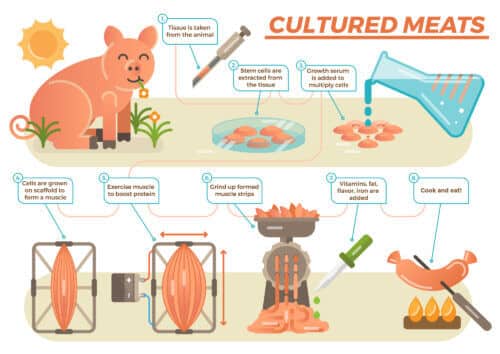The print was bovine fat cells and binder, which were grown and developed from stem cells in the company's laboratories

Meat-Tech, an international company for the production of cultured edible meat products that develops the next generation of food products based on 10D digital printing technology, reports that for the first time it has succeeded in printing a cultured beef fat compound. The company updates that it has successfully printed bovine fat cells and a binder and support material, which were grown and developed from stem cells in the company's laboratories. Printing the beef fat and the binder created a fat compound that reached a height of about 1 mm and is intended for consumption. Height printing represents progress compared to the previous milestone achieved by the company, which included an experiment in which meat tissue with a thickness of about XNUMX mm was printed.
This success joins the completion of a successful experiment in sorting stem cells into beef fat cells as well as the success in printing a uniform and thin tissue of meat produced from stem cells. As part of the development plan to create an industrial process for growing and building meat tissues in XNUMXD printing without slaughtering animals, the company developed a number of compounds intended for printing that included an edible binder, which helps create an accurate digital structure and link the printed cells, as well as real beef fat cells that were developed, sized and sorted from stem cells that the company produced.
As part of this experiment, an edible compound was printed, containing the beef fat cells in the structure of a cube with a volume of 10 cubic mm. The printing was done by a digital, XNUMXD printer developed by the company. This successful experiment constitutes further progress towards the development of the technology for printing clean meat tissue, which will include additional components, such as muscle for example, in order to create real meat tissue created with the help of the growing, printing and production process technology that the company is developing, without slaughtering, harming and raising animals.

2 תגובות
It is a shame that the efforts are not invested in creating organs for transplantation.
I still really don't believe in the commercial potential of this thing, I think it's much better to concentrate on substitutes of plant origin.
Beautiful. And the price?